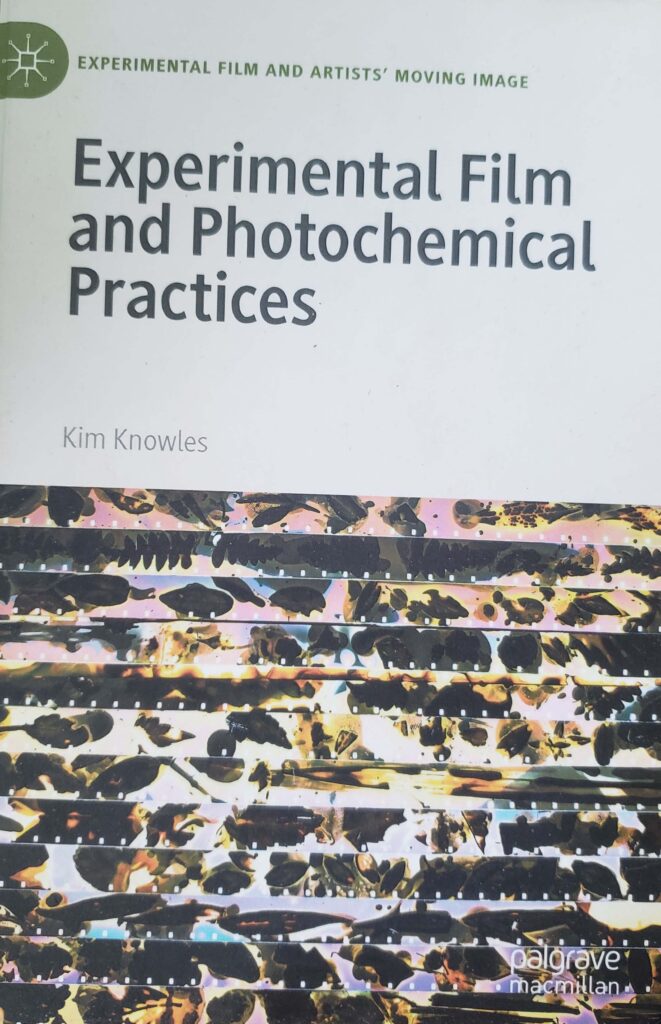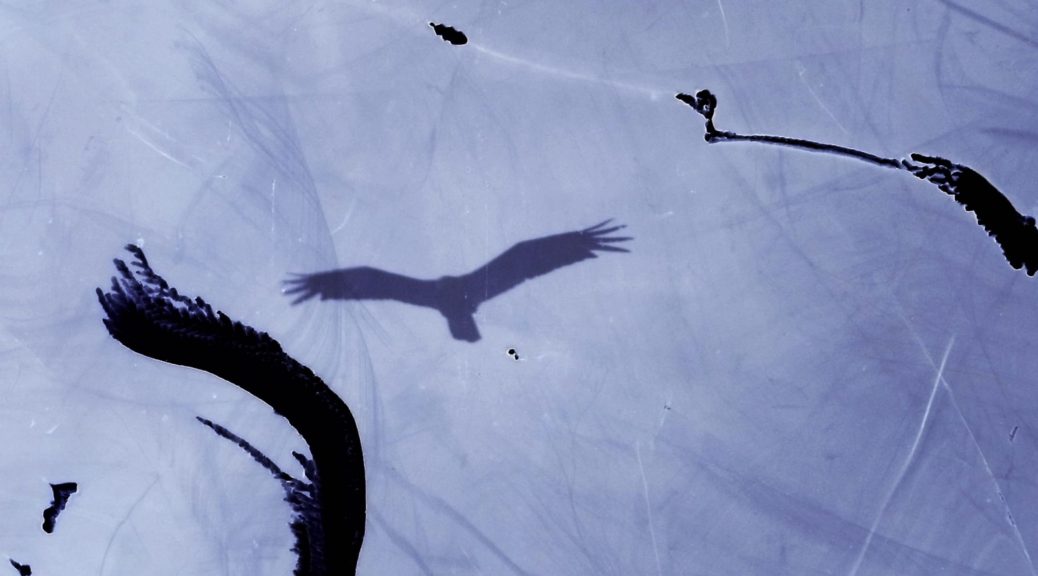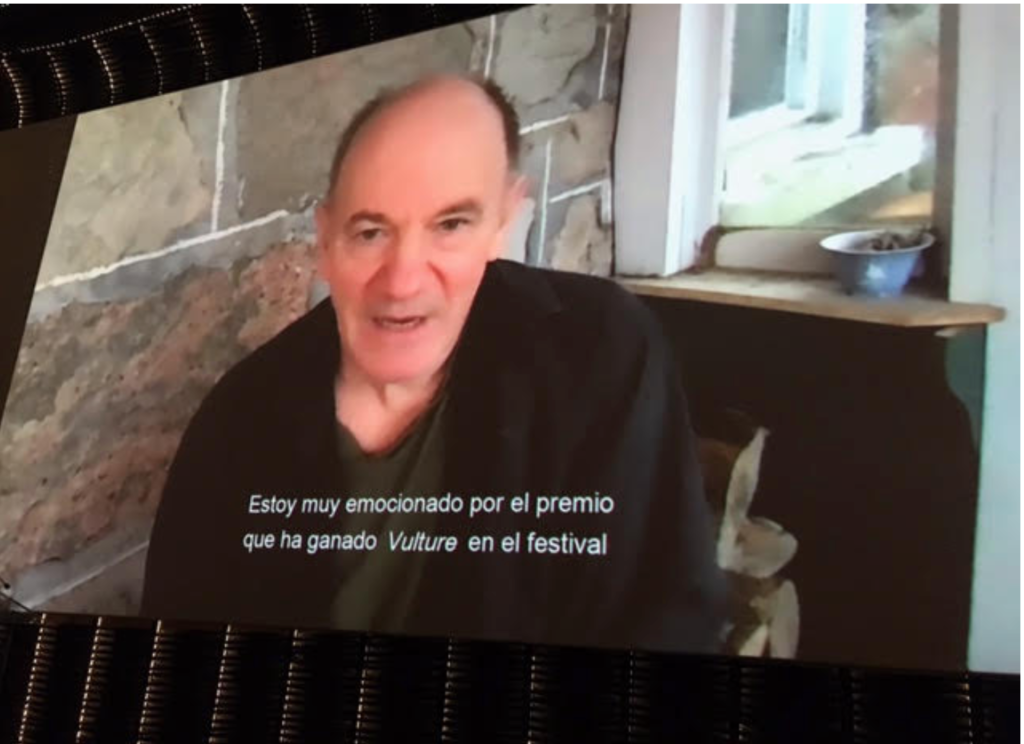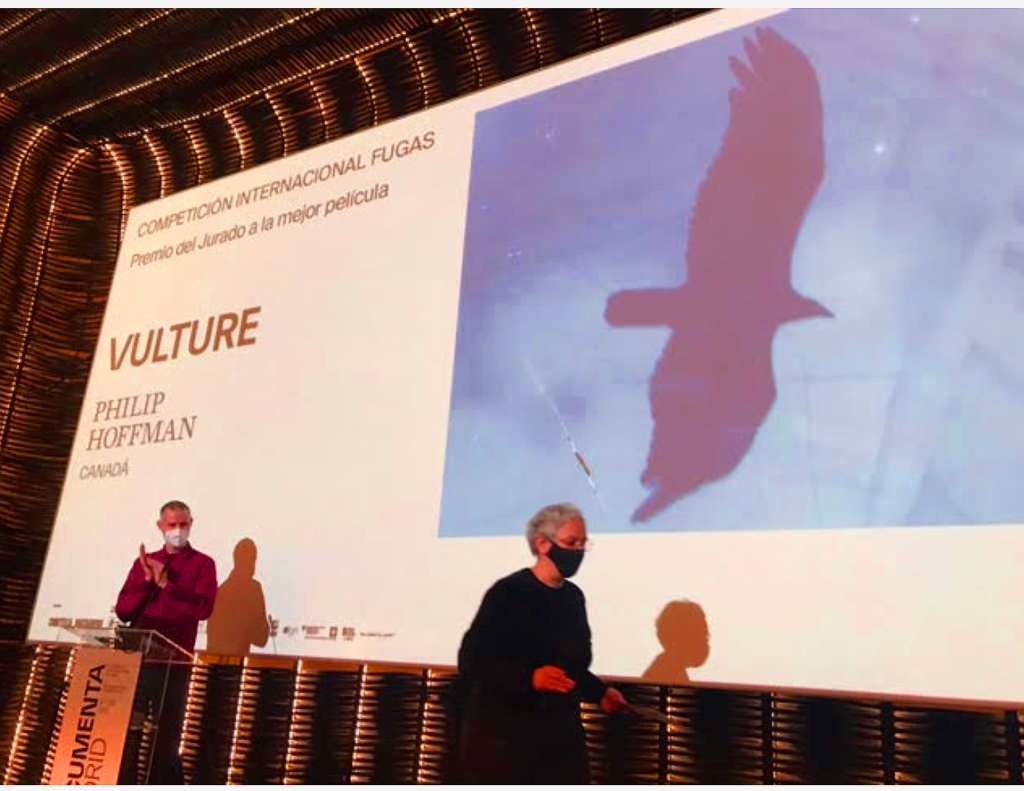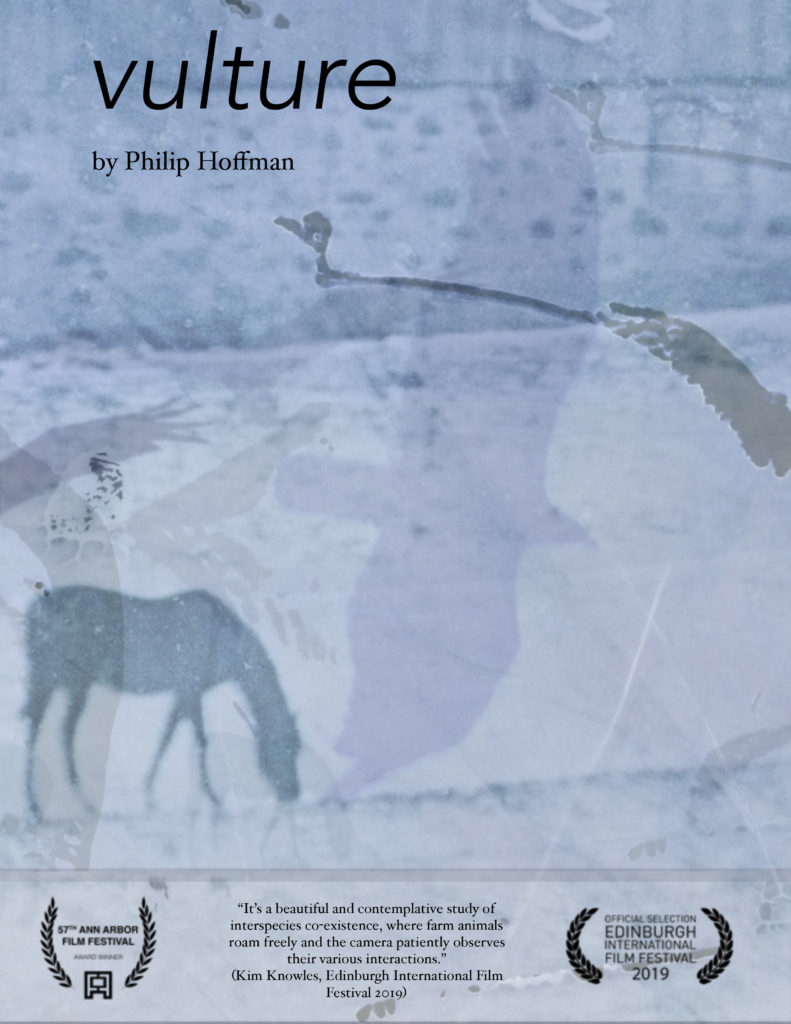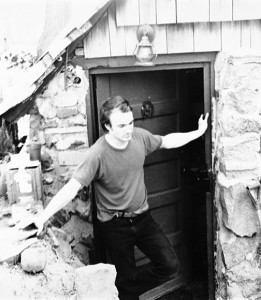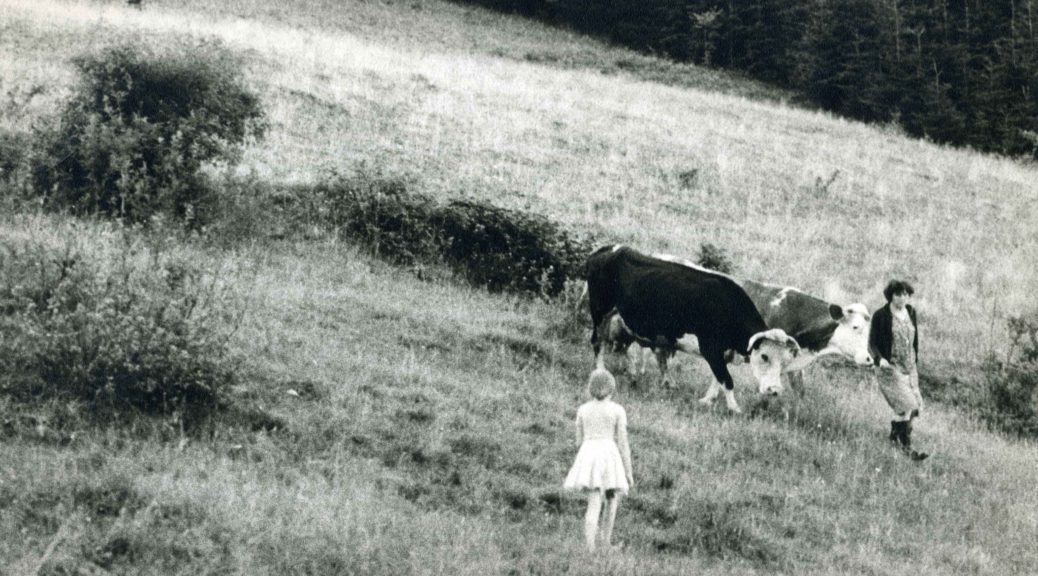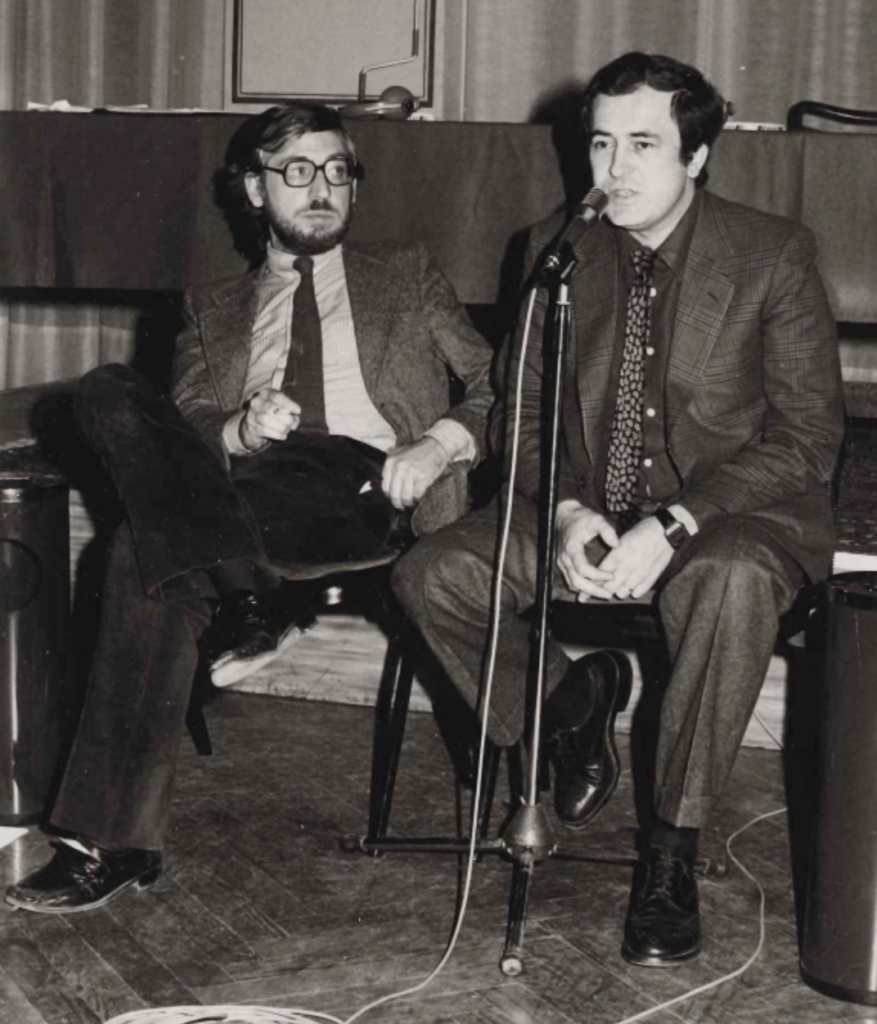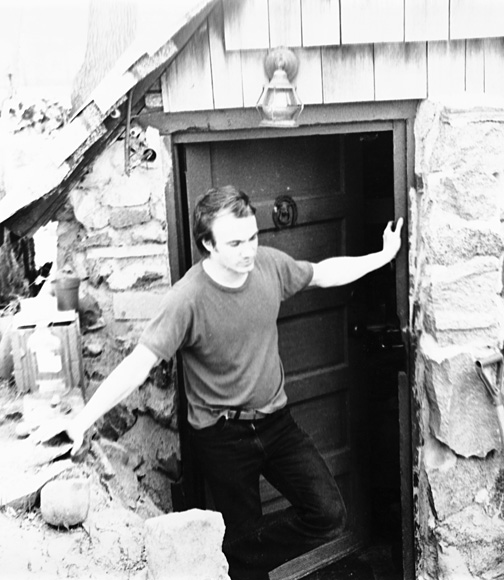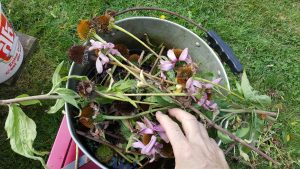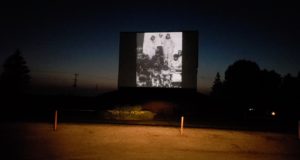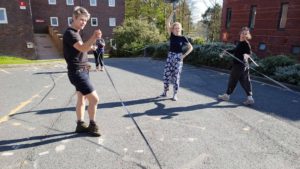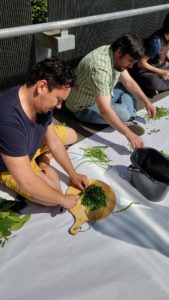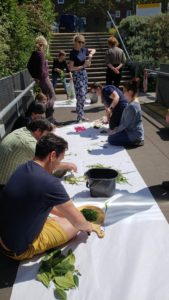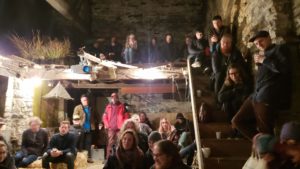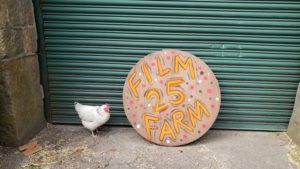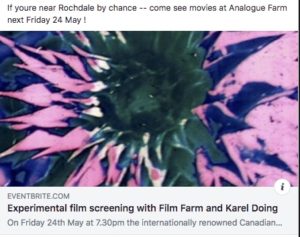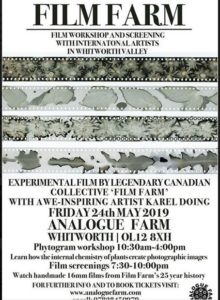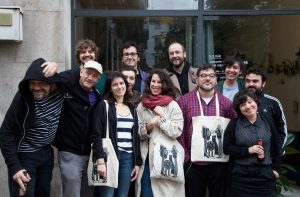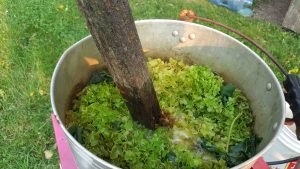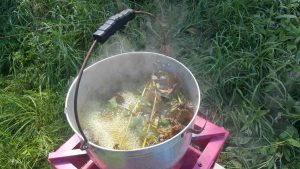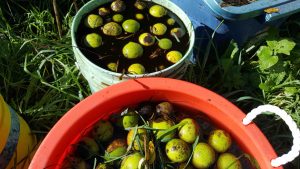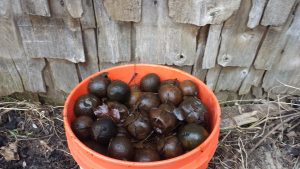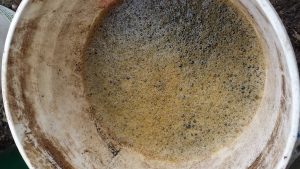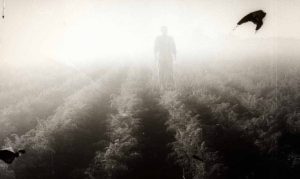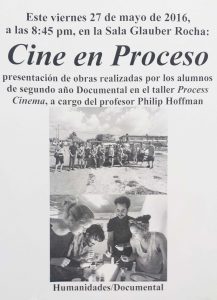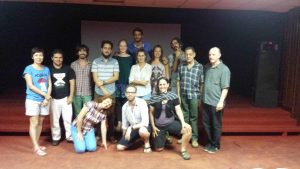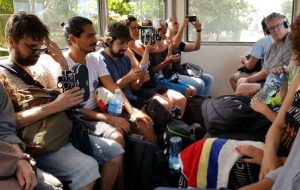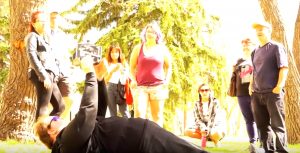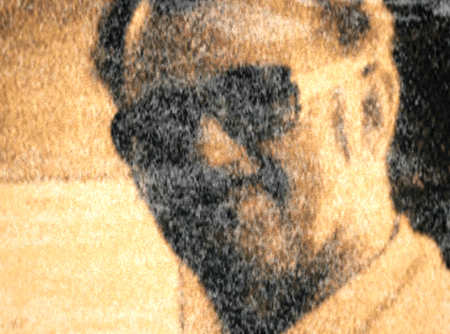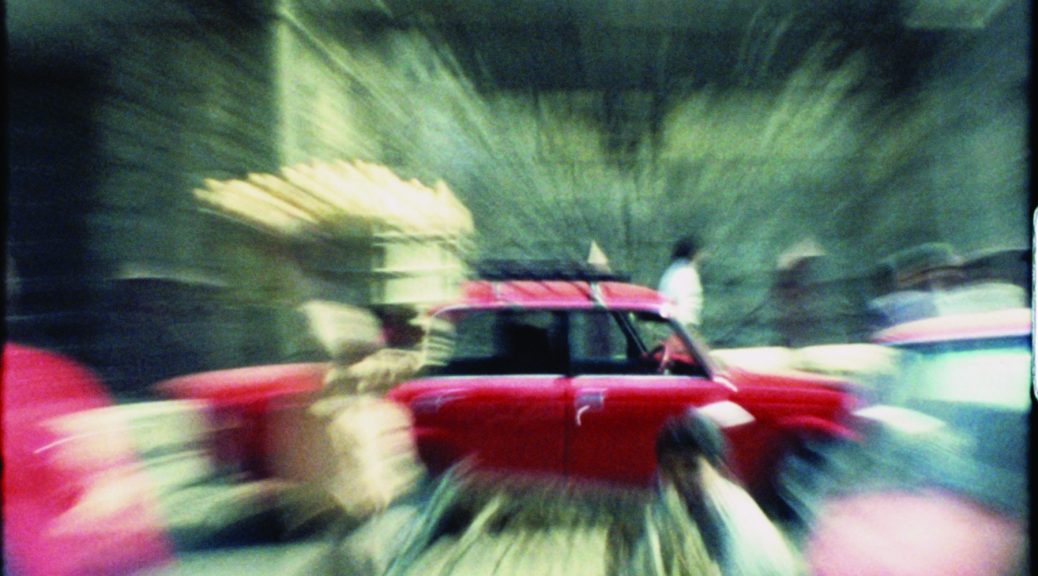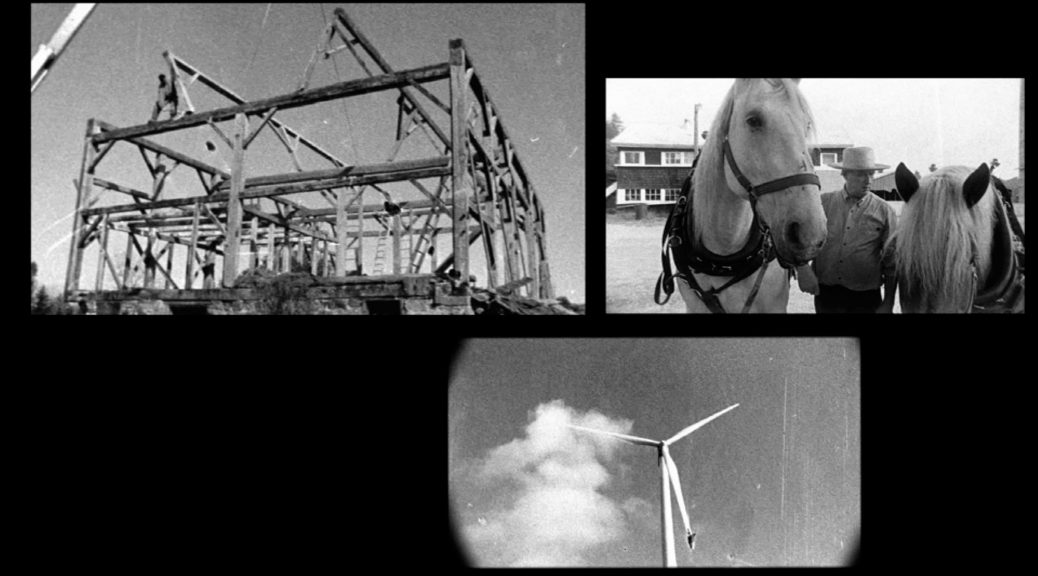Jordan Cronk, Off the Grid (on Hoffman’s vulture) Cinemascope 2020, MDFF Selects, TIFF Bell Light Box: …Nature plays a different but equally ominous role in vulture, an unassuming yet sublime featurette by veteran Canadian filmmaker Philip Hoffman. Assembled by the director over a period of two years, the film comprises 16mm footage shot on Hoffman’s farm in Mount Forest, Ontario that the filmmaker then photochemically processed with natural plant and flower pigments, resulting in a roughhewn, multivalent display of richly tinted and textured celluloid. To hear Hoffman tell it, his analog approach to cinema is part and parcel of a universal cycle of survival and sustainability; like a vulture, his film feasts on the very elements of its production, finding aesthetic nutrients in its every ingredient.
Following a brief shot of Homer Watson’s turn-of-the-20th-century landscape painting The Flood Gate, the film commences with a procession of slow, Wavelength-esque zooms towards a variety of animal life (pigs, horses, cows, goats, chickens) before shifting focus to take in the larger ecosystem surrounding the farm fauna: overhead, birds of prey patiently circle, while in the distance, tractors plow the land and farmers work the fields. The film’s landscape imagery occasionally recalls Nicolas Rey’s autrement, la Molussie (2012) or the work of the late Peter Hutton, though the quietly swelling audio frequencies—the sound is credited to Luca Santilli and Clint Enns, with a mix by experimental filmmaker Isiah Medina (88:88)—portend something far less comforting. Like Wilcox, vulture forgoes direct sound; instead, the distant din of fluttering distortion echoes across the stereo field like helicopter blades on the horizon, with the occasional sample of a young boy’s voice emerging from the void as if summoned from another dimension. Before long, those unassuming establishing shots (which appear mostly untouched by any post-production techniques) give way to a series of colour montages that cut together heavily treated images of plant, animal, and human life from around the farm—an idyllic vision disrupted by the subliminal threat of violence and industrialization. Rather than let the threat loom, Hoffman reworks a selection of this same material for a bracing coda in which the previously placid imagery is subjected to a caustic combination of rapid edits and atonal musical flourishes. (Unsurprisingly, both the sound and edit for this section is credited to Medina.) “Vultures live together, and they don’t fight, they help each other,” the boy says at one point—a perfectly succinct bit of childlike wisdom for a world in which pleasure and peril often go hand in hand.
“for its beauty, the perfection of the relationship between sound and image, its radical concept of cinematographic time, the sophistication of the montage, but above all, for its non-negotiable commitment to the essence of cinema – the image in time – and the didactic and community context that it generates around its work” Fugas International Jury Award from Haden Guest, director of the Harvard Film Archive, Dora García, artist and filmmaker, and Raúl Camargo, director of the Valdivia International Film Festival (Chile)
`vulture’ website Here
Hoffman’s film `vulture’ was awarded the Best Film Award (over 45 min) by the Fugas International Competition Jury at Documenta Madrid 2020. Thanks to Isiah Medina (Editing & Sound Mix), Luca Santilli (Sound) and his band Kennedy (Music), Dagie Brundert, Ricardo Leite,, Franci Duran, Clint Enns, Dennis Day, Zac Goldkind, Janine Marchessault and The Ontario Arts Council.
Kim Knowles on “vulture”:
“Hoffman’s vulture” a beautiful and contemplative study of interspecies co-existence, where farm animals roam freely and the camera patiently observes their various interactions. Shot on 16mm film and processed with plants and flowers, it’s also an exercise in eco-sensitivity on so many levels.” Edinburgh International Film Festival, Blackbox
“The marks and blemishes on the surface of the film that result from hand- processing draw attention to both the mediating presence of the material and the hand of the artist in crafting a visual record of the place. Sections of the film were processed and tinted with a variety of flowers, fruits and plants from around the farm – magnolia, hyachinth, hydrangea, daffodil, rhododendron, pond algae, lilac, oregano, comfrey, rose, mint, goldenrod, hosta buds, wild garlic seeds, tansy, aster, echinacea, sunflower, and walnut. From this perspective vulture is more than just a visual appreciation of the land; it is a complex material engagement with an eco-system that draws out the expressive possibilities of living things beyond conventional forms of representation. Over a shot of a flying bird, we hear a child relating fragments of information about vultures and their hunting habits. `Vultures live together, and they don’t fight, they help each other’, says the child. `I didn’t know that’, replies Hoffman. Behind this simple exchange lie multiple layers of signification that testify to the intellectual and spiritual depth of the film, and, at the same time, point towards a philosophy of collective nurturing that quietly runs under the surface of the Independent Imaging Retreat (Film Farm).” Excerpt from “From Chapter 4, From Film Lab to Film Farm by Kim Knowles from her book Experimental Film and Photo Chemical Practices
